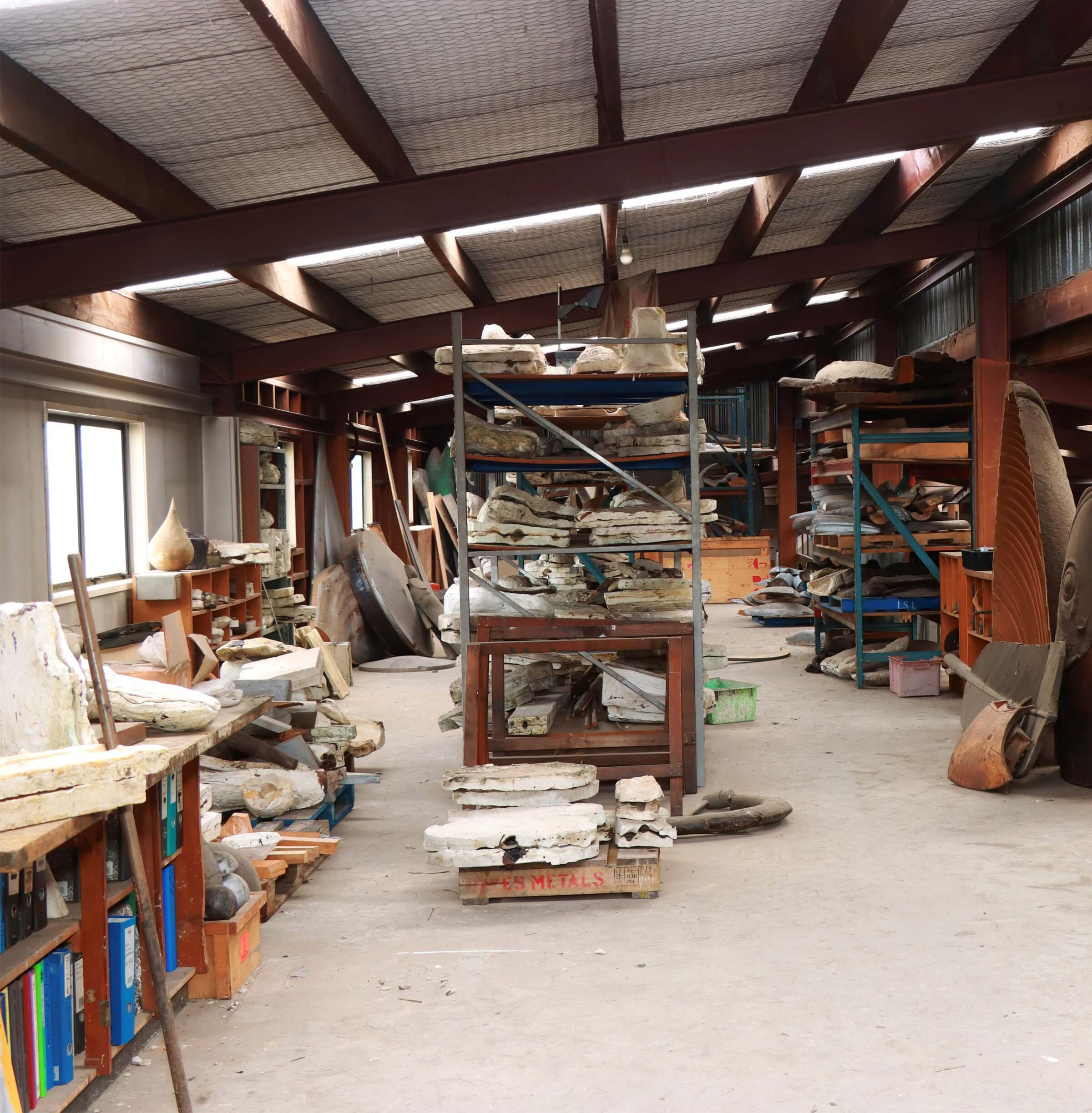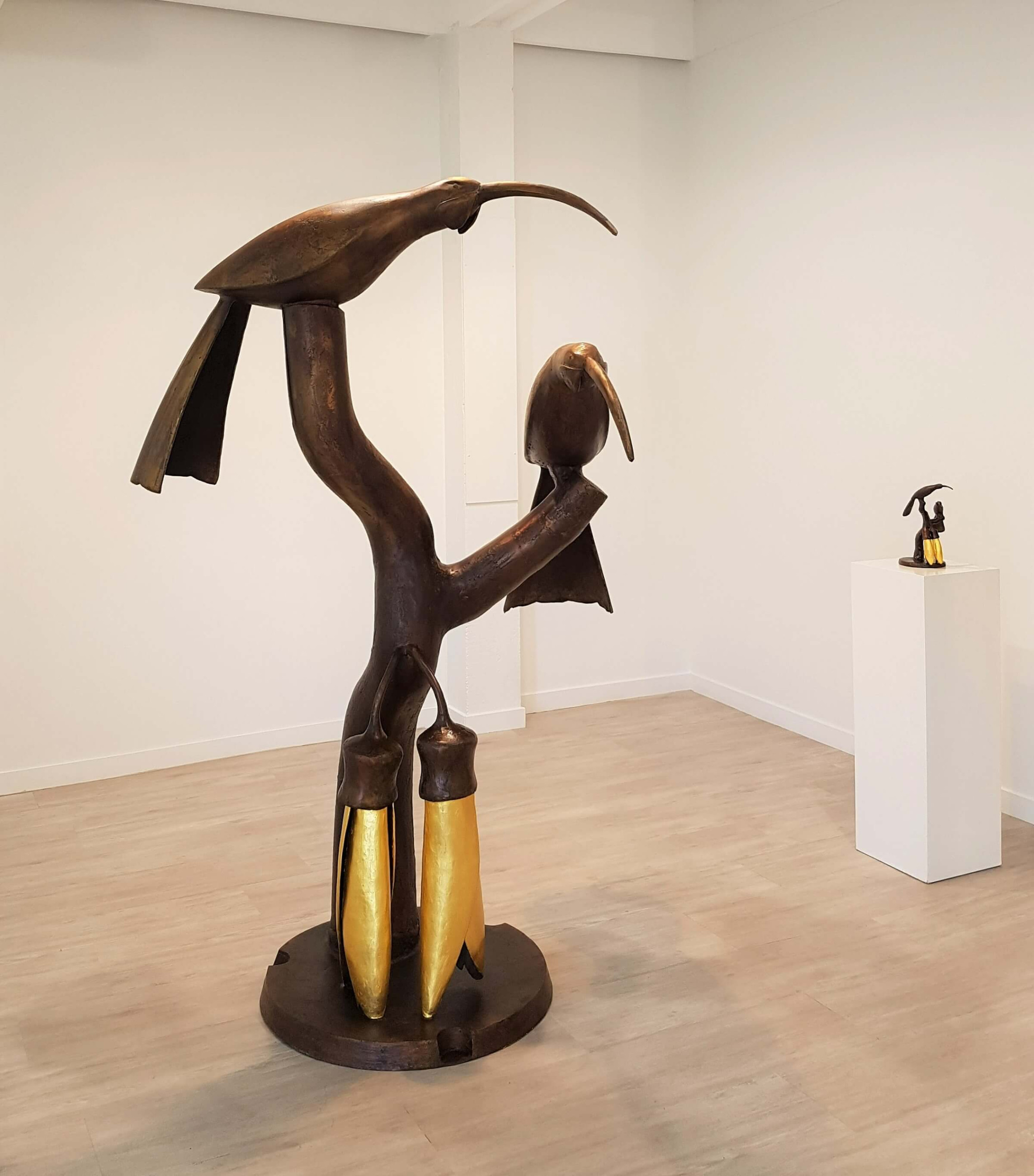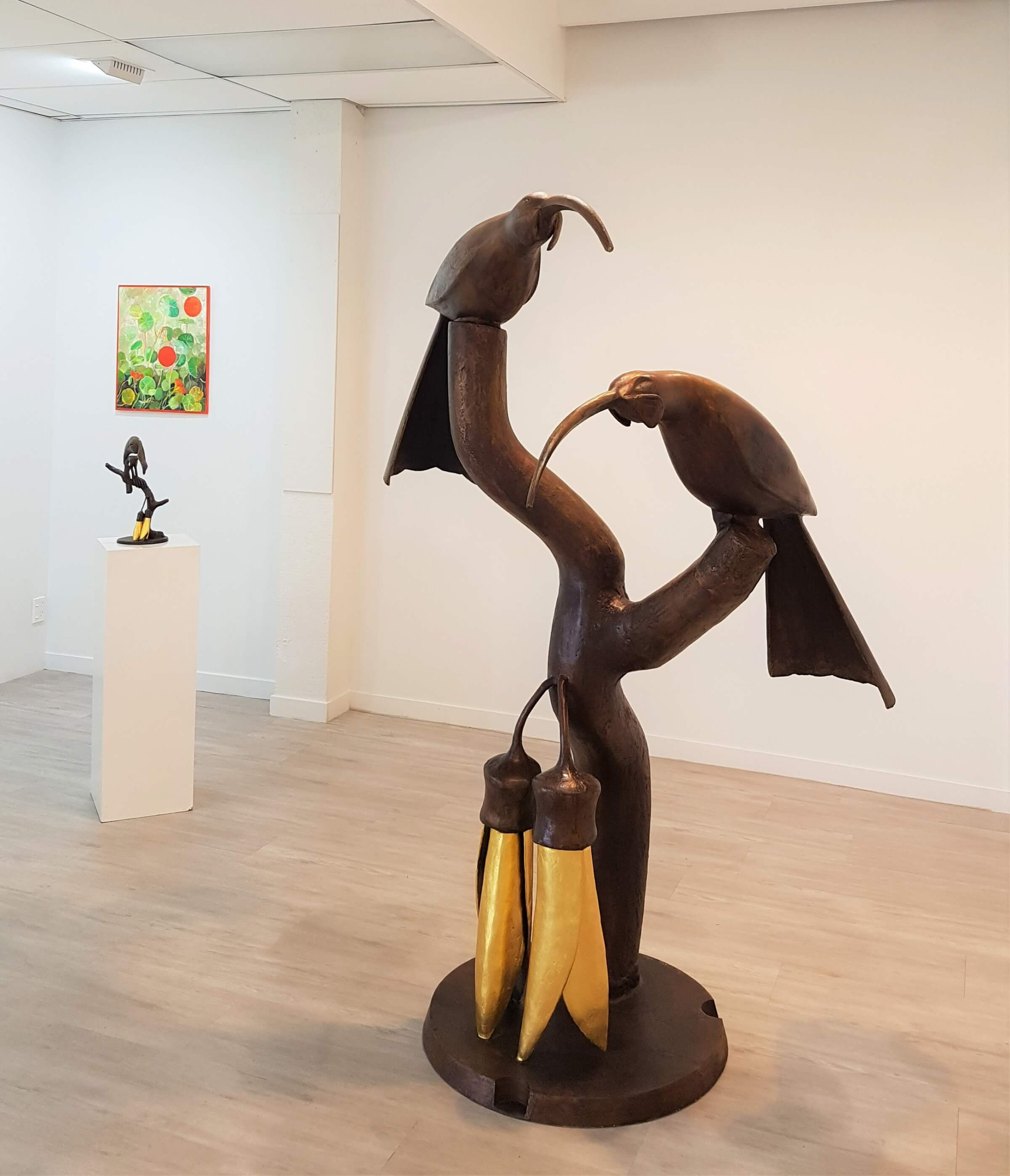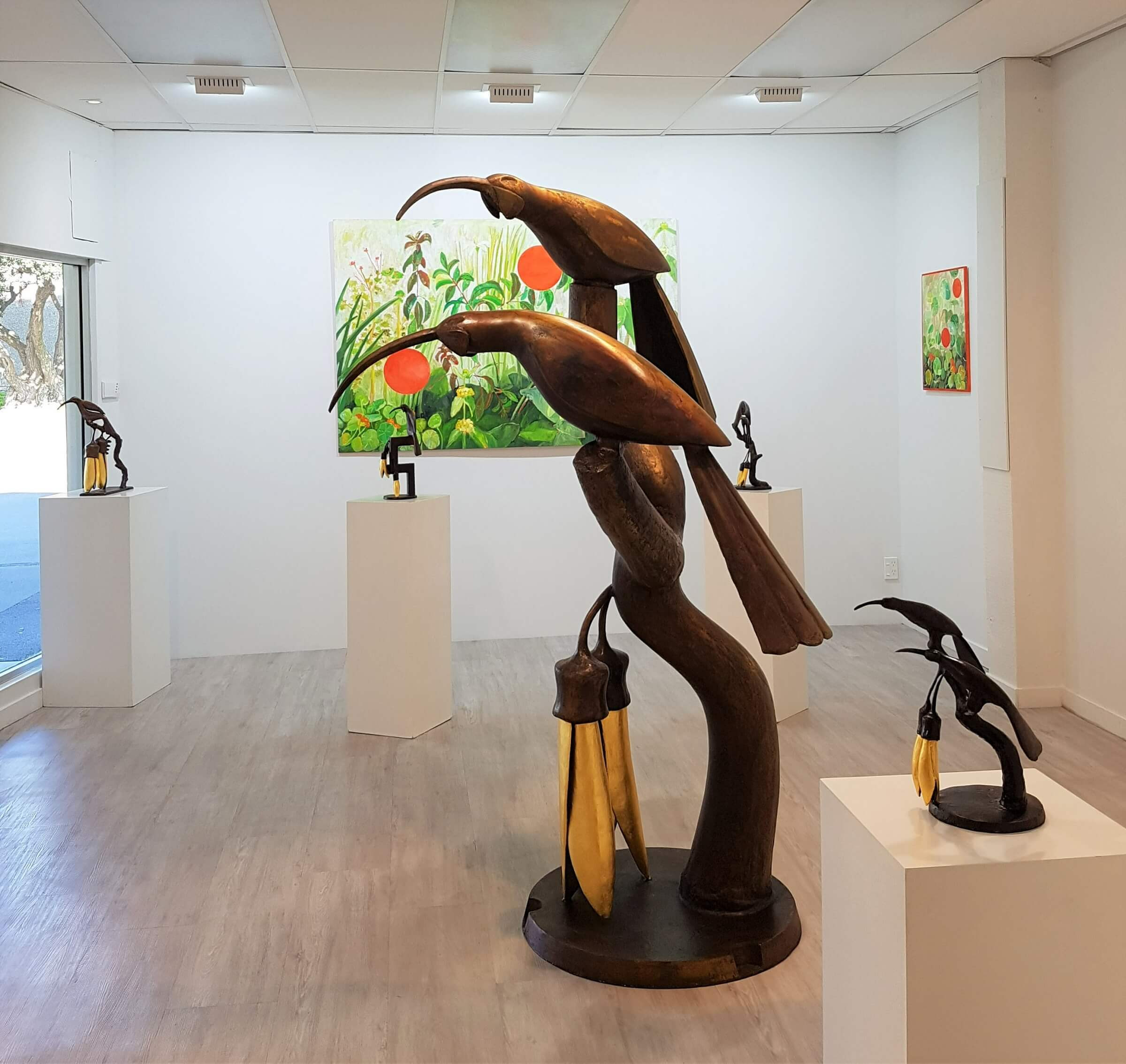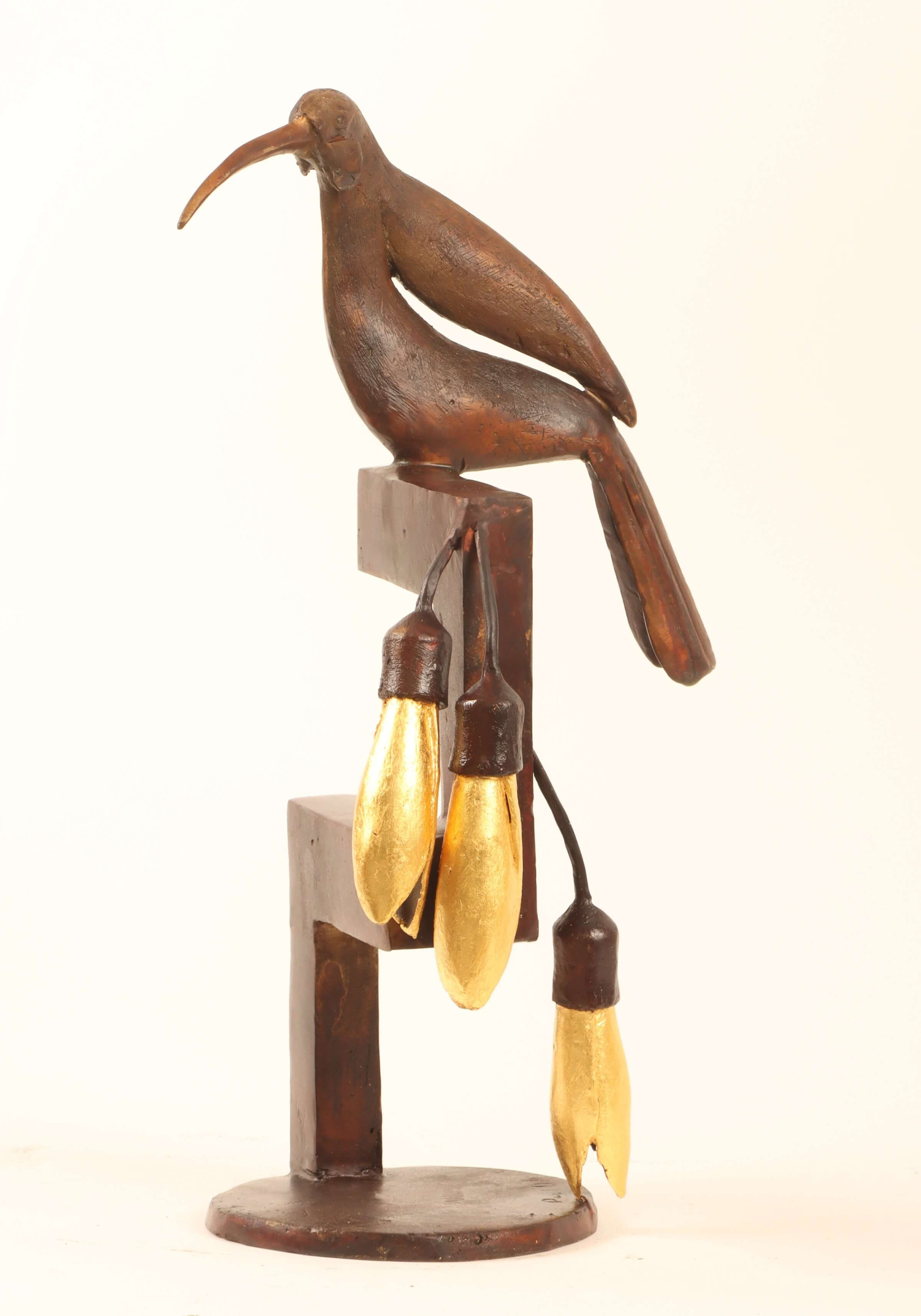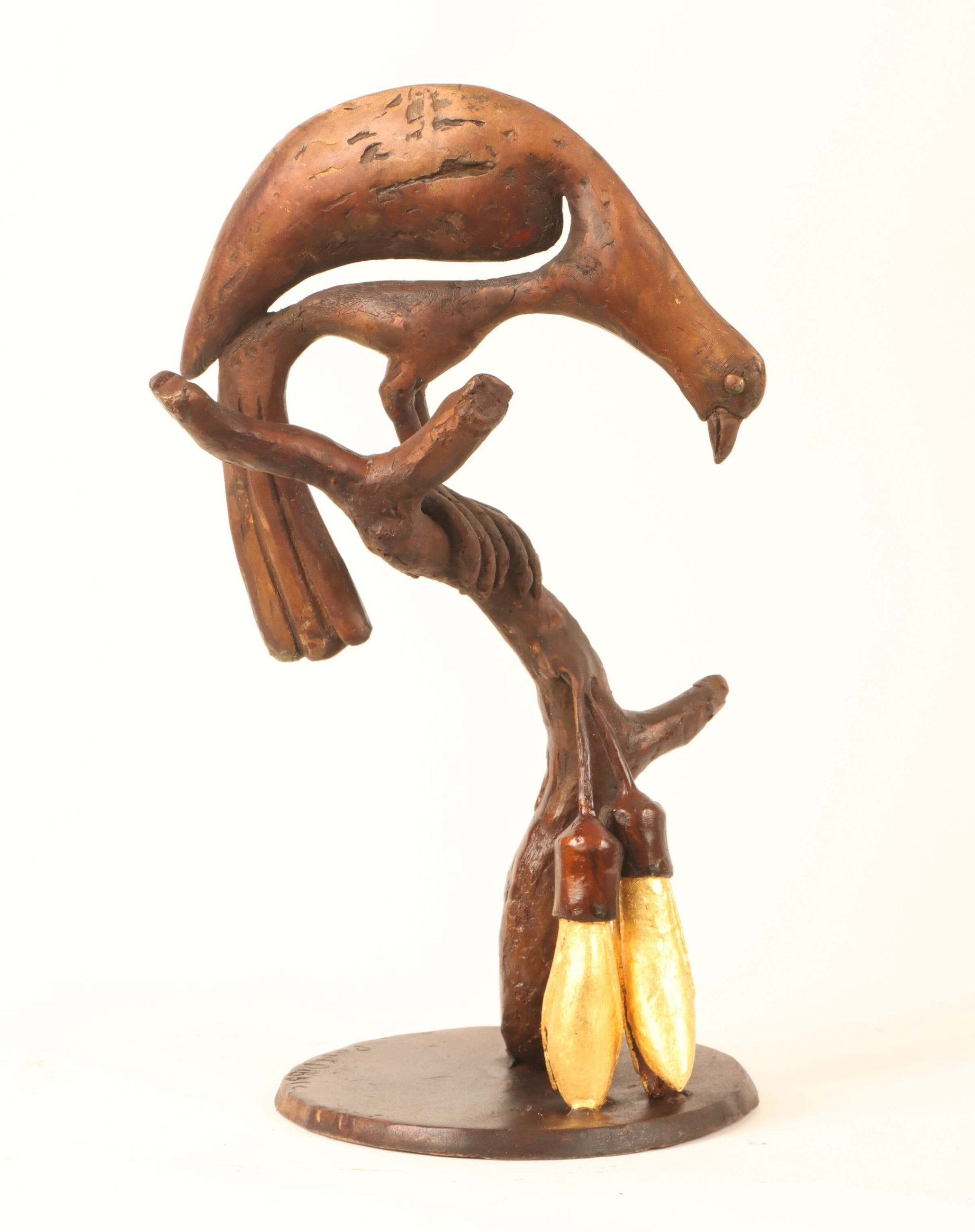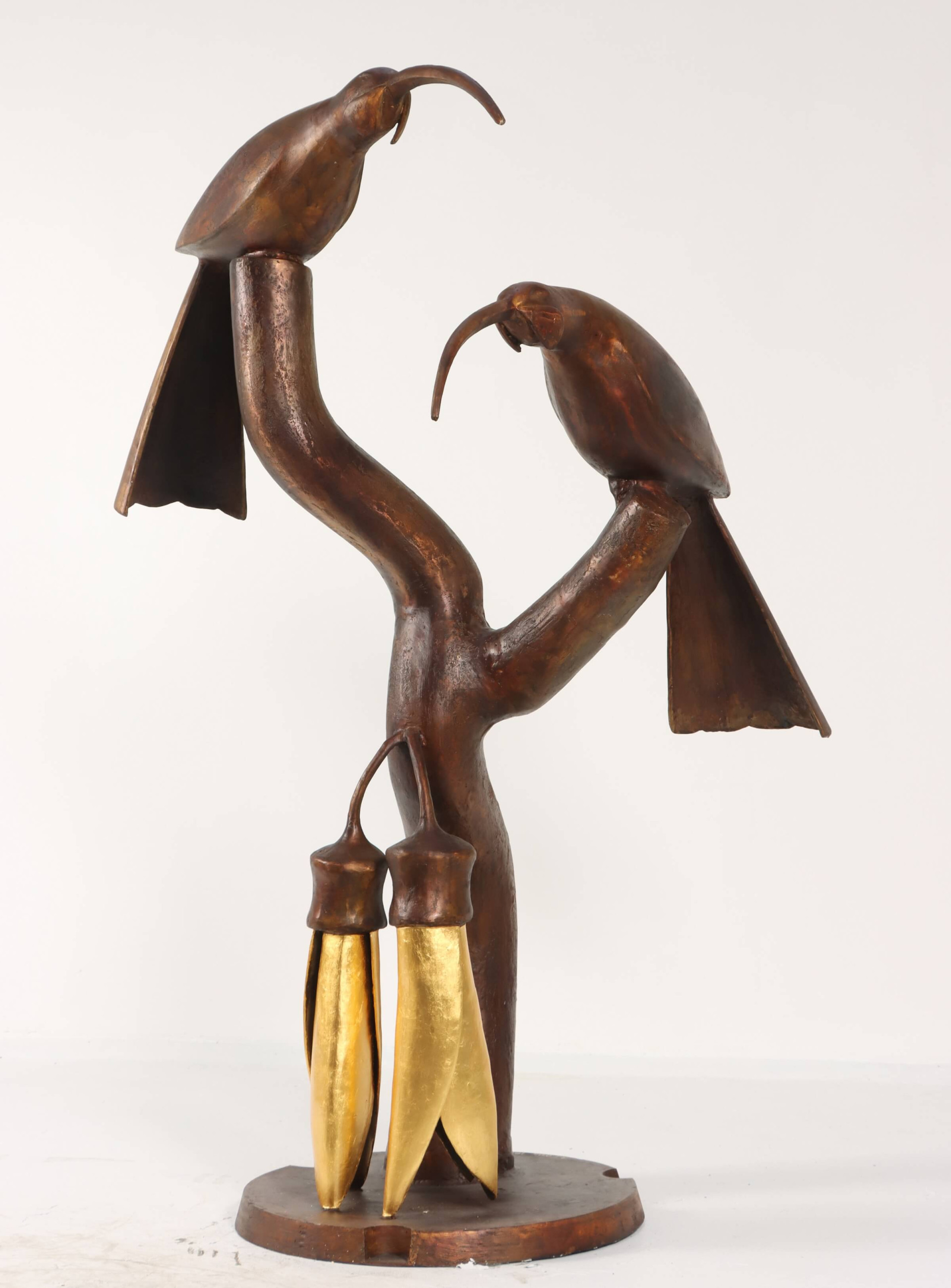September 1 - September 25, 2022 Dibbles & Son
September 1 - September 25, 2022 Dibbles & SonGroup, Zimmerman Art Gallery, Palmerston North
Text
An exhibition by three Dibbles – husband, wife, and son – three D (and mostly sculpture!), a family grouping as if latter day Brugal but, in keeping with contemporary notions of art, with very different visions.
Paul Dibble is one of New Zealand’s better-known sculptors with public works dotted throughout the country, from a career spanning 50 years. The works on display include studies of the cherished huia and golden kōwhai. Part of what is special about these sculptures is their local attachment, for they are all made here, from original concept to finished piece, and referencing this geographical place, where huia were last seen in the Tararua ranges in 1907.
Daniel Dibble’s sculptural explorations show a sounding out of stylistic trends – a bird caught mid-flight; another balanced on a golden peach; a boy precariously balancing after a fall, as if ready to fling himself off to ricochet on a building or onto a dance floor with all the energy of youth; an abstract form reaching up to disappear into the ether.
But the greatest number and the most recent of Daniel’s works are a series of spiral forms, coiling and rebounding inwards, challenging the possibilities of bronze casting. The simplest calls to mind the famous line of Paul Klee, of “taking a line for a walk”.
The most complex of Daniel’s spiral forms could indicate something as grandiose as the movements of the universe, or as small and simple as the path a fly might make in a drunken trip around the room. Some of these sculptures are left as simple wild forms, while others include a tiny element of realism – a surfer or a robed figure - to prompt the viewer into seeing these as giant realms.
Fran Dibble’s most recent paintings are themed on a messy garden, allowing for compositions of a jumble of colour and forms. Flat dots peek through to the painting’s ground colour, creating their own curious sense of movement. Their perfect spherical forms emphasise the expressive flamboyant disorder of the foliage behind.
